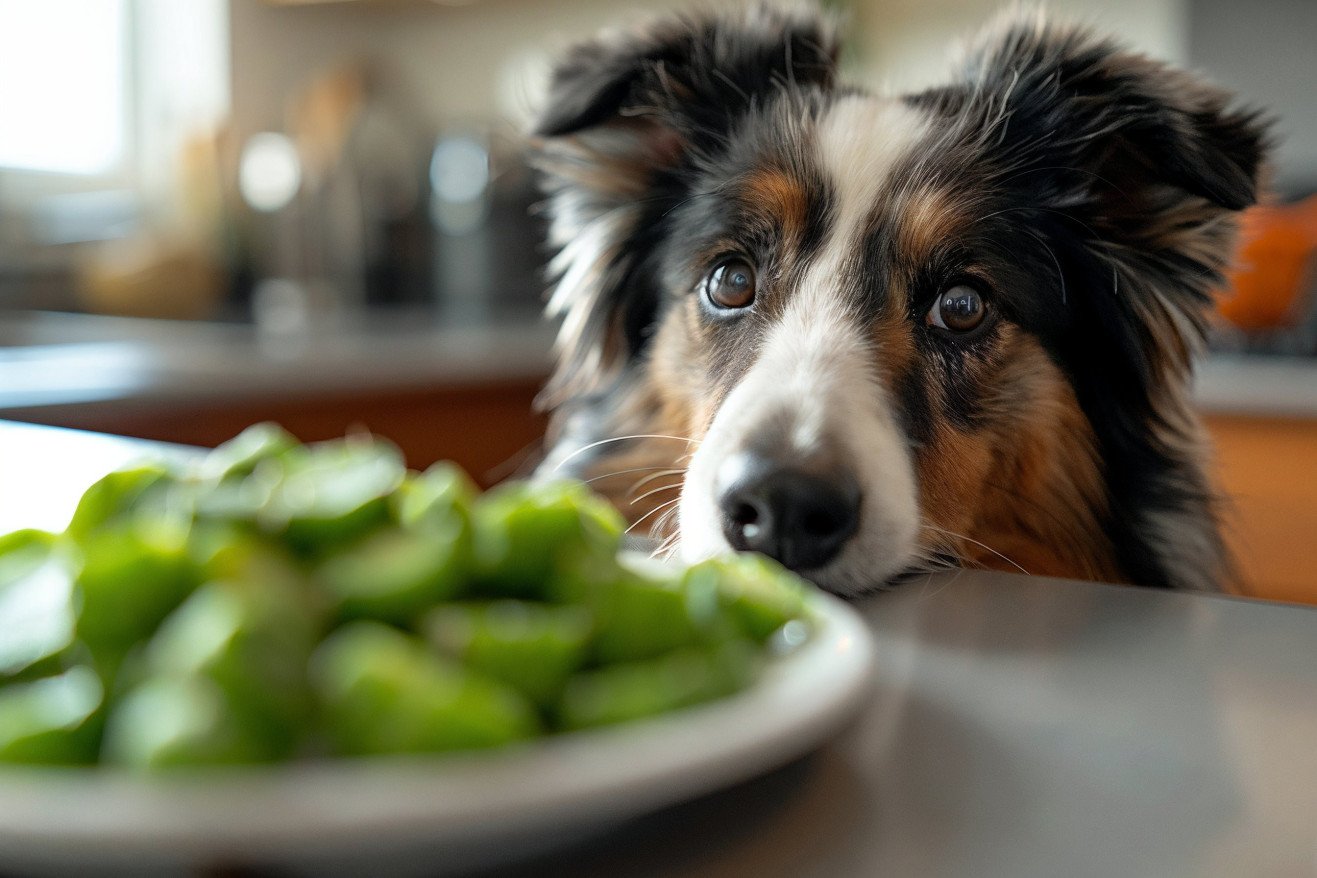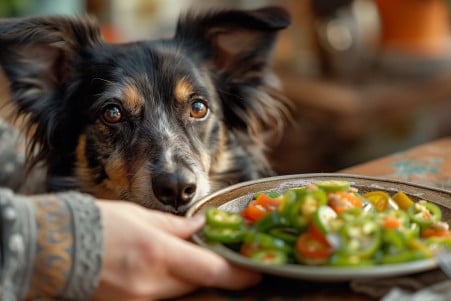Can Dogs Eat Nopales? A Look at This Cactus Treat for Pups
1 May 2024 • Updated 1 May 2024

With the rise of plant-based diets for dogs, you may be wondering if you can feed your dog nopales, the pads of the prickly pear cactus. Nopales are not poisonous and can be fed to dogs in moderation, but you need to introduce them slowly and prepare them properly, which includes removing the spines and cutting them into small pieces. Nopales are a good source of fiber and antioxidants, and they also contain vitamin C, which can help with your dog's digestion and overall health.
To help you better understand whether you should feed your dog nopales, we'll take a closer look at nutritional research and expert opinions on the potential benefits and drawbacks. This will help you decide whether to add this unusual food to your dog's diet and, if so, how to do it in a way that's both safe and healthy. Knowing the facts will help you ensure that nopales are an occasional treat that has a positive impact on your dog's health.
Can dogs eat nopales?
How to Add Nopales to Your Dog's Diet: A Step-by-Step Guide
Whenever you introduce a new food to your dog's diet, it's important to do so slowly over the course of several days or even weeks, says the American Kennel Club. This will give your dog's digestive system time to adapt and reduce the likelihood of any adverse reactions. When it comes to nopales (prickly pear cactus pads), this means adding a small amount of cooked, unseasoned nopales to your dog's regular food. Watch for any signs of gastrointestinal upset, such as vomiting, diarrhea, or a change in appetite, which could indicate an adverse food reaction according to the AKC.
If your dog handles the initial introduction well, you can slowly increase the amount of nopales you give them over the course of a week or longer. However, ZamiPet warns that you should never feed your dog more than 10% of their diet in nopales, as too much fiber can lead to digestive problems. Keep a close eye on your dog's bowel movements - the AKC says you can use a fecal scoring chart to assess the consistency - as any changes could indicate a problem that needs to be addressed.
If your dog experiences any worrisome symptoms, such as vomiting, diarrhea, or a significant decrease in appetite or energy levels at any point, stop feeding them nopales immediately and call your vet, as these could be signs of a food intolerance or allergy. Taking your time and being cautious when introducing new foods to your dog is the best way to ensure that the transition is a healthy one.
Proper Preparation: How to Make Nopales Safe for Dogs
Nopales need to be cleaned and cooked to get rid of the spines and lower the oxalic acid content, according to CanDogs-Eat.com. You can use a brush or a knife to remove the spines and thorns from the pads of the nopales.
After the spines have been removed, Kate's K9 Pet Care recommends boiling or steaming the nopales until they are soft and cooked through, but make sure not to add any salt or seasoning. Canned nopales are not recommended for dogs because they are often packed in a solution that contains a lot of salt and other preservatives.
Once the nopales have been cooked, PetDogPlanet.com suggests cutting or mashing them into small pieces to make sure they are safe for dogs to eat. This is an important step to ensure that nopales are safe for your dog to eat as an occasional treat.
Nopales May Have Health Benefits for Dogs
Nopales are the pads of the prickly pear cactus, and they can have several potential health benefits for dogs when consumed in moderation. For example, Hepper points out that nopales are high in fiber, which can help dogs with digestion and ensure they have regular bowel movements. They also contain several vitamins and minerals, including vitamin C, magnesium, and potassium, which Dogster says can help dogs maintain their health and immune system.
The antioxidants in nopales can also help lower inflammation and protect against certain health conditions, according to PetDogPlanet.com. Plus, because nopales are high in water and low in calories, they can help keep dogs hydrated and maintain a healthy weight.
That said, it's important to consider the potential drawbacks and benefits of feeding nopales to dogs. Like any new food, it's best to feed dogs nopales in moderation as part of a well-rounded diet and watch for any adverse effects.
Potential Dangers and Symptoms of Toxicity
Consuming raw, uncooked nopales can result in gastrointestinal distress, including vomiting, diarrhea, and abdominal pain due to oxalic acid and the sharp spines, as MasterClass notes. In addition, digestive upset can occur from overfeeding nopales or adding them to a dog’s diet too quickly, as they are high in fiber and can be hard for some dogs to digest.
Dogs with certain health conditions, such as bladder stones or urinary tract problems, may be more susceptible to the oxalates in nopales. Symptoms of toxicity include vomiting, diarrhea, lethargy, loss of appetite, and excessive drooling or pawing at the mouth, according to JustAnswer. If a dog consumes raw nopales or experiences severe symptoms, pet owners should seek professional help from a veterinarian immediately.
Healthy Alternatives: Other Vegetable Treats for Dogs to Consider
While nopales can be a healthy treat for dogs in moderation and when prepared correctly, there are other vegetables that may be a better option for regular treats. Raleigh Vet lists carrots, green beans, broccoli, and cooked squash as healthy, natural treats that are full of nutrients and fiber, vitamins, and minerals, but don’t come with the potential downsides of nopales.
Meanwhile, the American Kennel Club notes that carrots are a low-calorie treat that’s high in fiber and beta-carotene, and green beans are packed with important vitamins and minerals. Fruits such as apples, blueberries, and sweet potatoes can also be healthy, natural treats for dogs in moderation, according to Puppy Leaks.
As with any new treats, it’s important to start with small amounts and watch for any negative reactions or digestive upset. A veterinarian can also help pet parents find the best treats for their dog based on their unique dietary needs.
Conclusion: Weighing the Pros and Cons of Feeding Nopales to Dogs
When prepared and served properly, nopales can be a safe and even healthy addition to a dog's diet. However, it's important to make sure that the pads are cooked thoroughly and that all of the spines and thorns are removed to avoid any digestive upset or injury. Even though nopales can provide fiber, vitamins, and antioxidants, they should still be considered a special treat rather than a regular part of a dog's diet.
As with any new food, including nopales, dog owners should watch their pets carefully for any signs of a bad reaction and stop feeding them nopales if any issues arise. A veterinarian can also help pet owners figure out how much and how often they should feed their dogs nopales based on their dog's unique dietary needs and health concerns.


